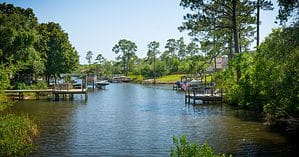The Sampson County Landfill is the largest landfill in North Carolina. Covering 135 acres, it’s found at 7434 Roseboro Highway in Roseboro. Since 2000, it’s been operated by the Glover Construction Company for GFL Environmental and Waste Industries, with Smith-Gardner as its engineer. One of the reasons it’s so large is that it accepts trash created by hurricanes that batter the nearby coast of the state as well as trash from Raleigh, the capital city, and 44 counties. This adds up to 25 million tons of trash.
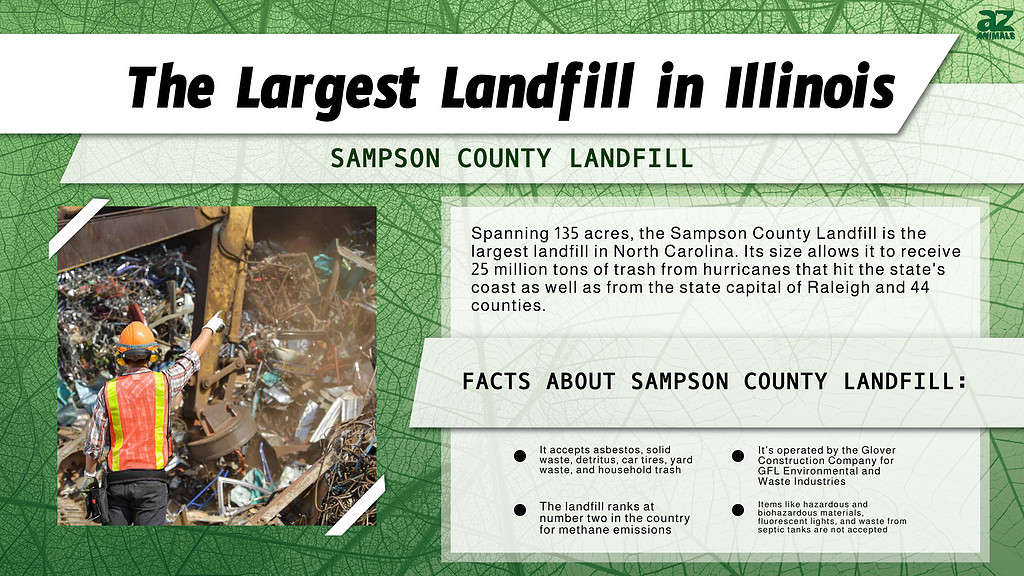
Acceptable items to throw in this North Carolina landfill include asbestos, solid waste from the municipal sewage system, detritus from construction and demolition sites, contaminated soil, car tires, and yard waste as well as household trash such as food scraps. Old furniture and “white” appliances such as dead refrigerators are also accepted at the landfill. Things that should not go into the landfill include hazardous and biohazardous materials, fluorescent lights, solids that dissolve in water, empty containers that were used to hold dangerous materials, and waste from septic tanks.
Unfortunately, the landfill ranks at number two in the country when it comes to methane emissions. The good news is that it does have a system to collect this greenhouse gas.
Where is Roseboro, North Carolina Located on a Map?
Roseboro is found in the southeastern part of North Carolina, in an area crisscrossed by streams and creeks and dotted with lakes. It’s 71.5 miles north of Wilmington, which lies on the Atlantic coastal plain. Here is found the state’s famous Outer Banks, which is a line of barrier islands. Indeed, the entire area is extraordinarily diverse when it comes to plants and animals.
Domesticated Animals
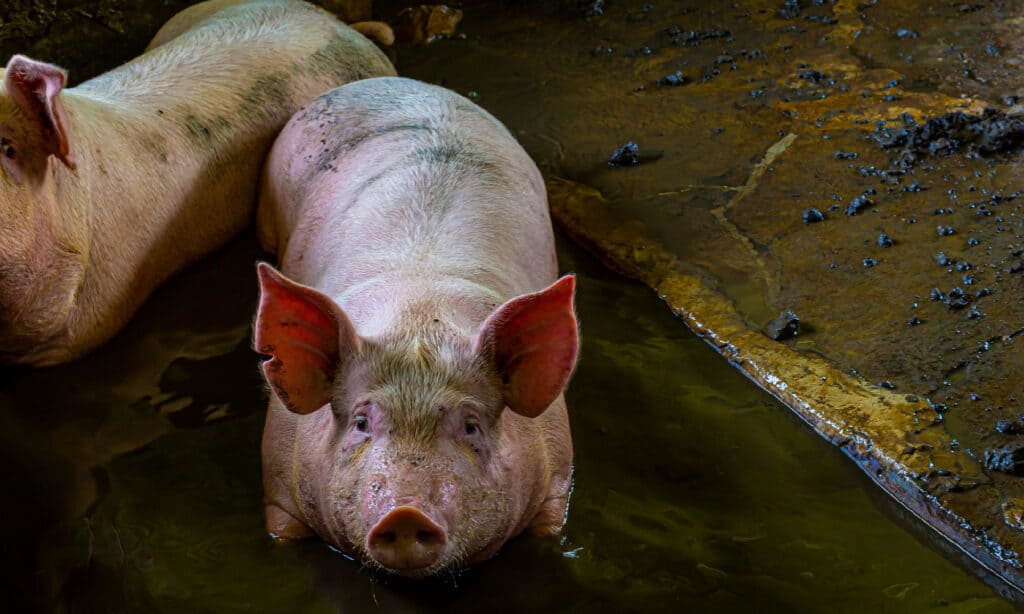
Sampson County, North Carolina has more pigs than people.
©iStock.com/banjongseal324
Sampson County is notorious for its number of hog farms. Only one other county in the United States raises more hogs, and hogs greatly outnumber people. Not only are there a whole lot of hogs in the area, there are also a great many turkeys and chickens.
Animals That Live In and Around Landfills
Though the largest landfill in North Carolina doesn’t seem to officially list the creatures that live in and around it, landfills are famous for being their own kind of habitat. Most of these animals, it must be said, are considered vermin and are attracted by the endless amounts of discarded food. Visitors and inhabitants include:
Insects
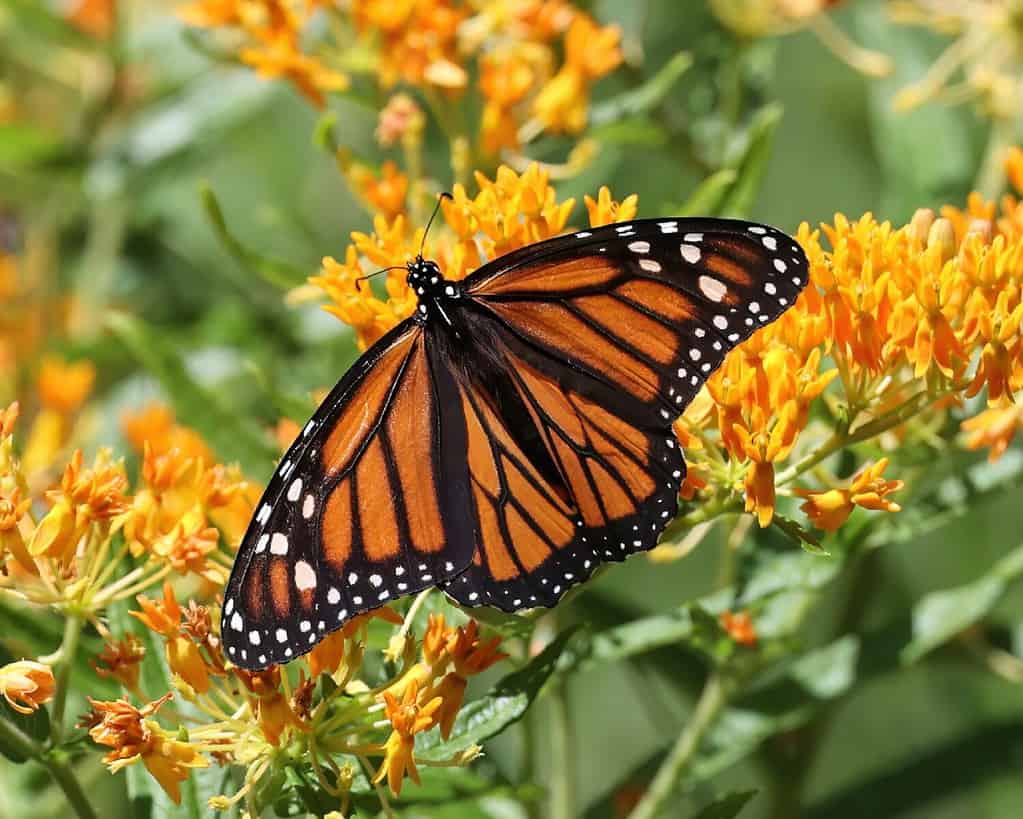
You might find a
monarch butterfly
puddling at a landfill.
©David Trevarthen/Shutterstock.com
Insects that make use of landfills include everything from ants to cockroaches to wasps to palmetto bugs. Even butterflies might be found at landfills, for many species take nourishment from rotting fruit and even rotting meat. This is called puddling. Butterflies who do this include such beauties as the commas, fritillaries, painted ladies, monarchs, common buckeyes, and admirals. Monarchs aren’t even adverse to puddling at oil stains on asphalt.
Mice, Rats, and Voles
Mice, rats, and voles not only love the rotting food of this North Carolina landfill, but the warmth of decomposing material creates perfect nests. Rodents can also find abundant materials to just chew on.
Virginia Opossums
The only North American marsupial, the possum digs through the landfill for whatever it can eat and digest, including bugs and mammals smaller than itself. It seems especially partial to ticks.
Raccoons
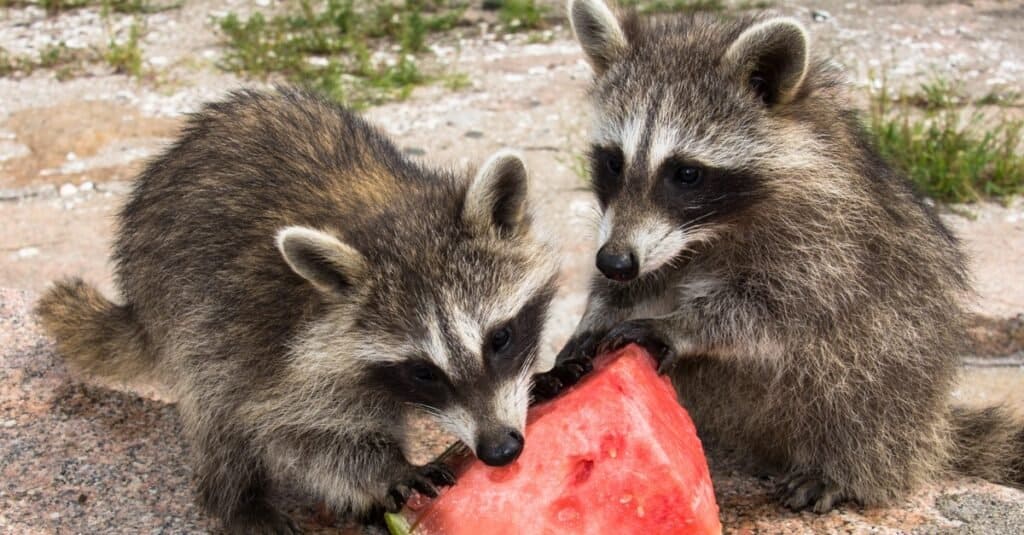
These little rascals love the leftover food found at a North Carolina landfill.
©Landshark1/Shutterstock.com
Raccoons are also omnivorous and take advantage of what’s found at a landfill. However, their craving for bird’s eggs and chicks makes them less likely to be found at a garbage dump than the possum.
Skunks
Like raccoons and possums, eastern striped skunks are omnivores that love to visit garbage dumps. They not only eat food scraps, but bugs and even mice and voles that they can catch.
American Crows
The loud, playful, and intelligent American crow is also a visitor to the landfill. Omnivorous, it will eat food scraps, bugs, and mice.
Buzzards
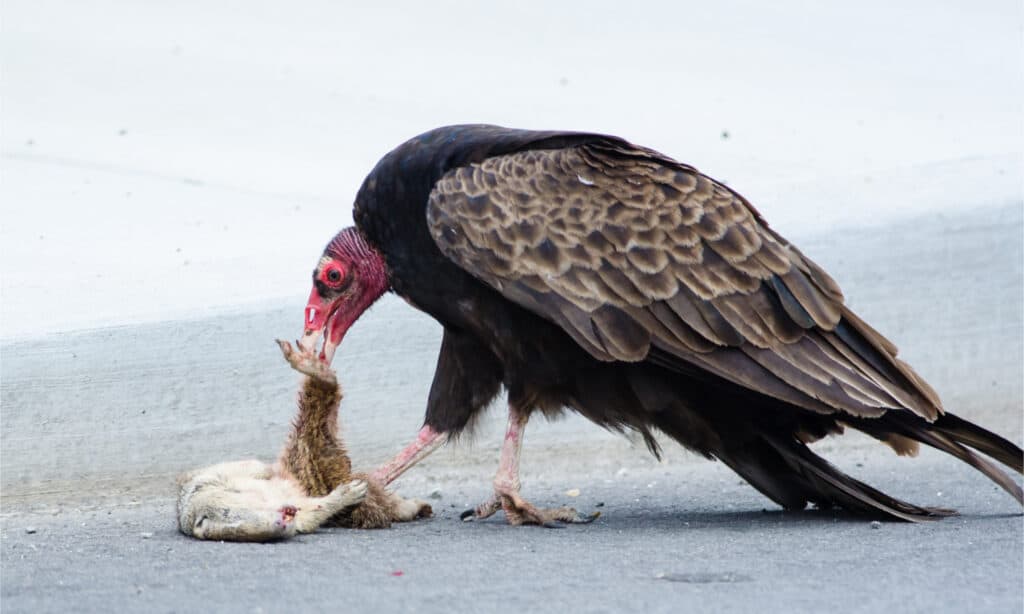
Part of nature’s clean-up crew, buzzards like this turkey vulture might hang around North Carolina’s largest landfill.
©hubert999/Shutterstock.com
Black headed and turkey vultures are native to the American south. Though they won’t eat absolutely everything that’s rotted and decayed, they have the stomach for stuff other creatures wouldn’t touch.
Herring Gulls
The North Carolina landfill isn’t so far from the ocean that it precludes the presence of herring gulls, who sweep in from the Outer Banks to glut themselves on trash.
The animals mentioned above in turn attract other animals that prey on them. Spiders catch insects. Snakes such as coachwhips make quick meals of rodents, as do foxes, feral dogs, and coyotes. Hawks, eagles, and owls descend upon crows and other smaller birds. Armadillos, recent arrivals from the southwest, may investigate if there are established ant colonies at the landfill.
Other Animals in the Area Around North Carolina’s Largest Landfill
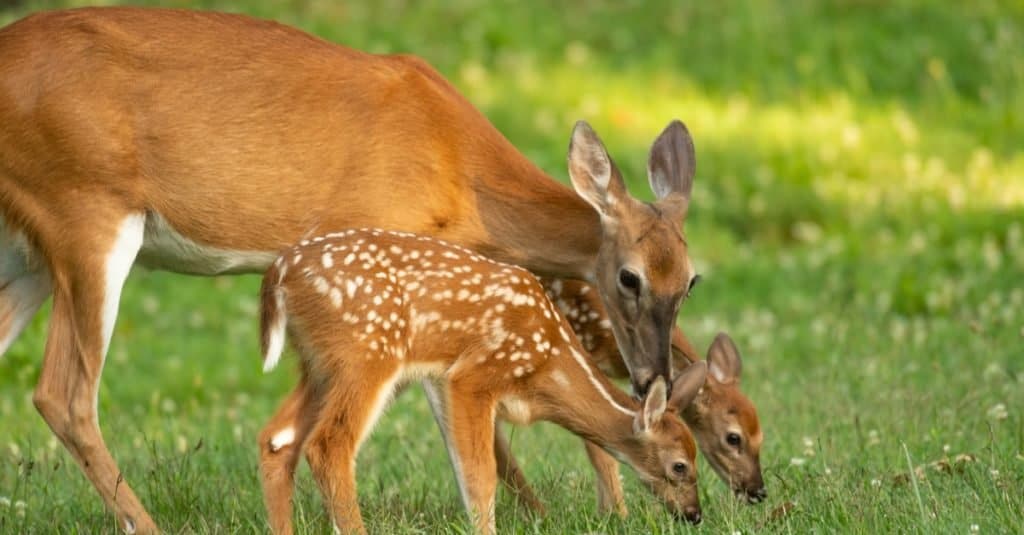
White tailed deer are common in Sampson County.
©Tony Campbell/Shutterstock.com
There are many animals in the area around the Sampson County landfill that don’t necessarily live within or visit it. They include:
Mammals
- White-tailed deer
- Rabbits, including the swamp rabbit and the western cotton tail
- Beavers
- Muskrats
- Flying squirrels, including the endangered Carolina northern flying squirrel
- Squirrels
- Chipmunks
- Lemmings
- Moles
- Shrews
- Bats
- Weasels
- Minks
- Cougars
- Black Bears
- Wild Boars
Birds
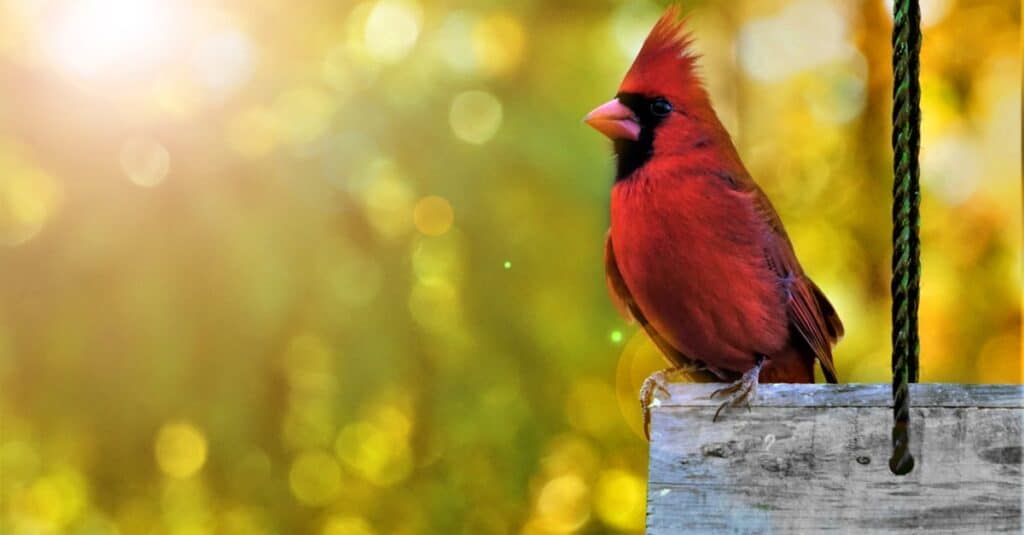
The cardinal is North Carolina’s state bird.
©iStock.com/ANCHASA MITCHELL
Birds that live around the area include:
- Northern cardinals, which are the state birds
- Shore and water birds such as geese, ducks, grebes, swans, scoters, sandpipers, cranes, mergansers, plovers, oystercatchers, loons, storm petrels, tropicbirds, and pintails
- Northern bobwhite
- Pheasants
- Wild turkeys
- Grouse
- Doves and pigeons
- Cuckoos
- Common nighthawk
- Whippoorwill
- Chimney swifts
- Rails
- Anhingas
- Cormorants
- Pelicans
- Herons
- Egrets
- Ospreys
- Woodpeckers
You’ll also find hundreds of species of “songbirds” including blue jays, chickadees, swallows, larks, robins, cedar waxwings, wrens, mockingbirds, finches, sparrows, thrushes, including American robins, and thrashers.
Reptiles and Amphibians
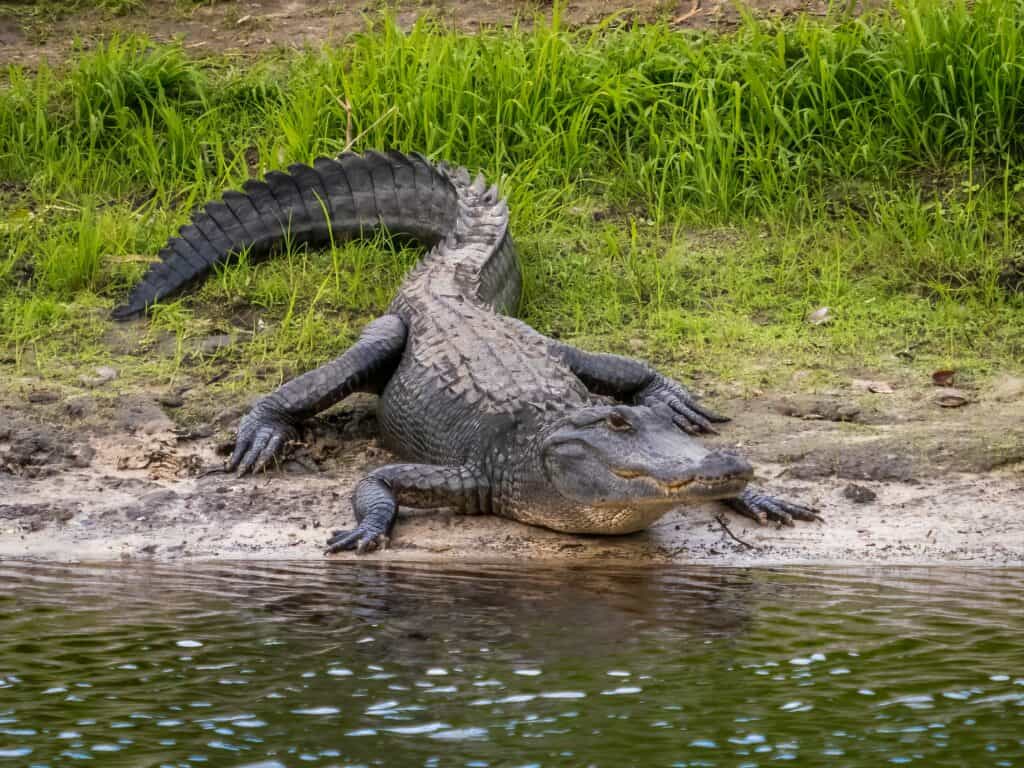
Yes, you can find gators in North Carolina.
©Jim Schwabel/Shutterstock.com
The many bodies of water in North Carolina, especially the coastal plain, make ideal habitats for many types of reptiles and amphibians. Most amphibians must keep their skin moist and need water in which to lay their eggs. Reptiles that live near the largest North Carolina landfill include:
- American alligators
- Snapping turtles
- Mud turtles
- Musk turtles
- Eastern painted turtle
- Cooters
- Sliders
- Sea turtles
- Geckos
- Anoles
- Fence lizards
- Skinks
- Glass lizards. Glass lizards are legless and often mistaken for snakes, but if you look closely, you’ll notice they have eyelids and earholes. They’re called glass lizards because if you grab one by the tail, it snaps off like a piece of glass.
- Snakes, including milk snakes, kingsnakes, racers and coachwhips, water snakes, corn snakes, garter snakes, and rat snakes. These snakes are nonvenomous, but snakes that are venomous include rattlesnakes, copperheads, cottonmouths, and coral snakes.
Amphibians include:
- Mudpuppies
- Water dogs
- Sirens
- Hellbenders
- Salamanders
- Amphiumas
- Frogs
- Toads
Arachnids
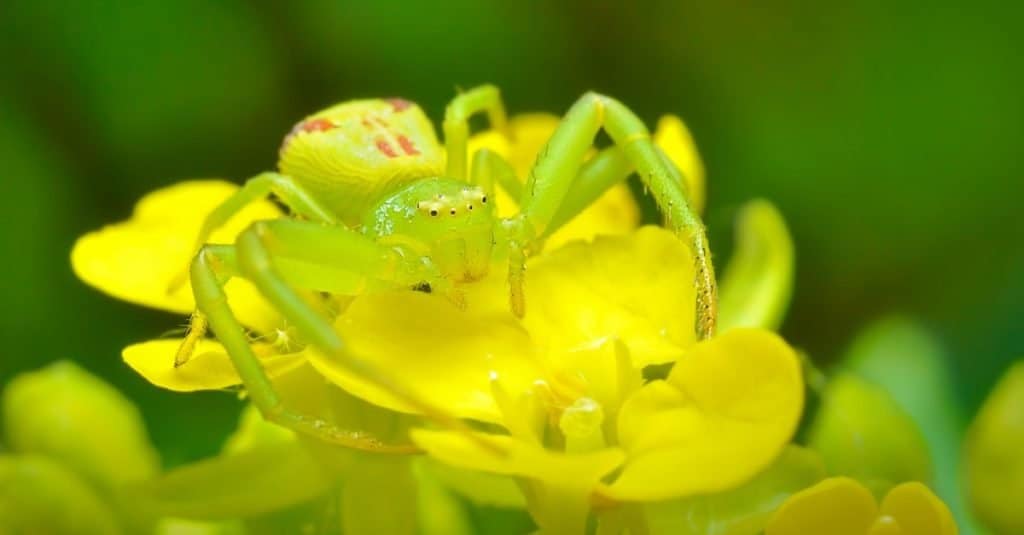
A pretty
crab spider
waits for prey on a flower.
©Iurochkin Alexandr/Shutterstock.com
- Spiders, including wolf spiders, black widow spiders, jumping spiders, crab spiders, sheet web weavers, and orb weavers
- Centipedes
- Millipedes
- Ticks
- Vinegaroons, named because they spray a vinegar-smelling liquid when they’re under attack.
- Whip scorpions
- Wind scorpions
- Harvestmen
- Daddy long legs
Fish
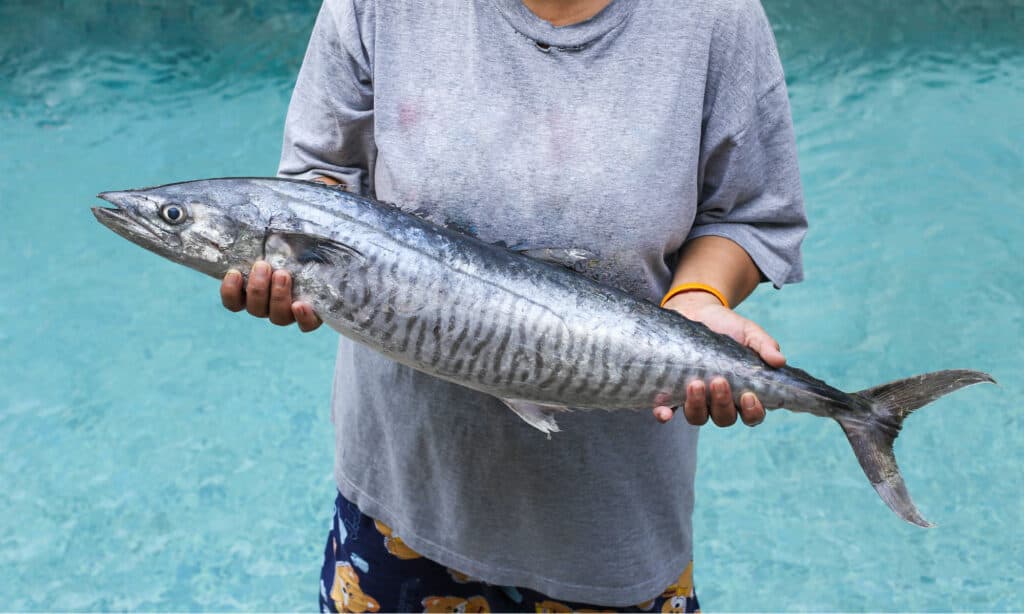
A fisherwoman showers off her king mackerel.
©Bignai/Shutterstock.com
North Carolina is, among many other things, notable for its fishing. The fresh, brackish, and saltwater in and near Sampson County make ideal habitats for all kinds of fish. Fish found in the Inner and Outer Banks include:
- Atlantic bonitos
- Atlantic croakers
- Black drums
- Atlantic menhaden
- Atlantic sea bass
- Bluefish
- Striped mullets
- Cobias
- Flounders
- Florida pompanos
- King mackerels
- Little tunnies
- Northern puff fish
- Skates
- Spots
Freshwater fish are also abundant in the many lakes around North Carolina’s largest landfill. A few miles south of Roseboro is Big Colly Bay, which isn’t a bay but a 1,796 square acre lake/swampland. Among the fish found here and in nearby bodies of water are:
- Muskellunge
- Carp
- Largemouth and smallmouth bass
- Catfish
- Brook trout
- Perch
- Bullhead
- Crappie
The Cape Fear River, which flows to the west of Roseboro and empties into the Atlantic, is famous for its sunfish, catfish, and shad.
Flora: Trees
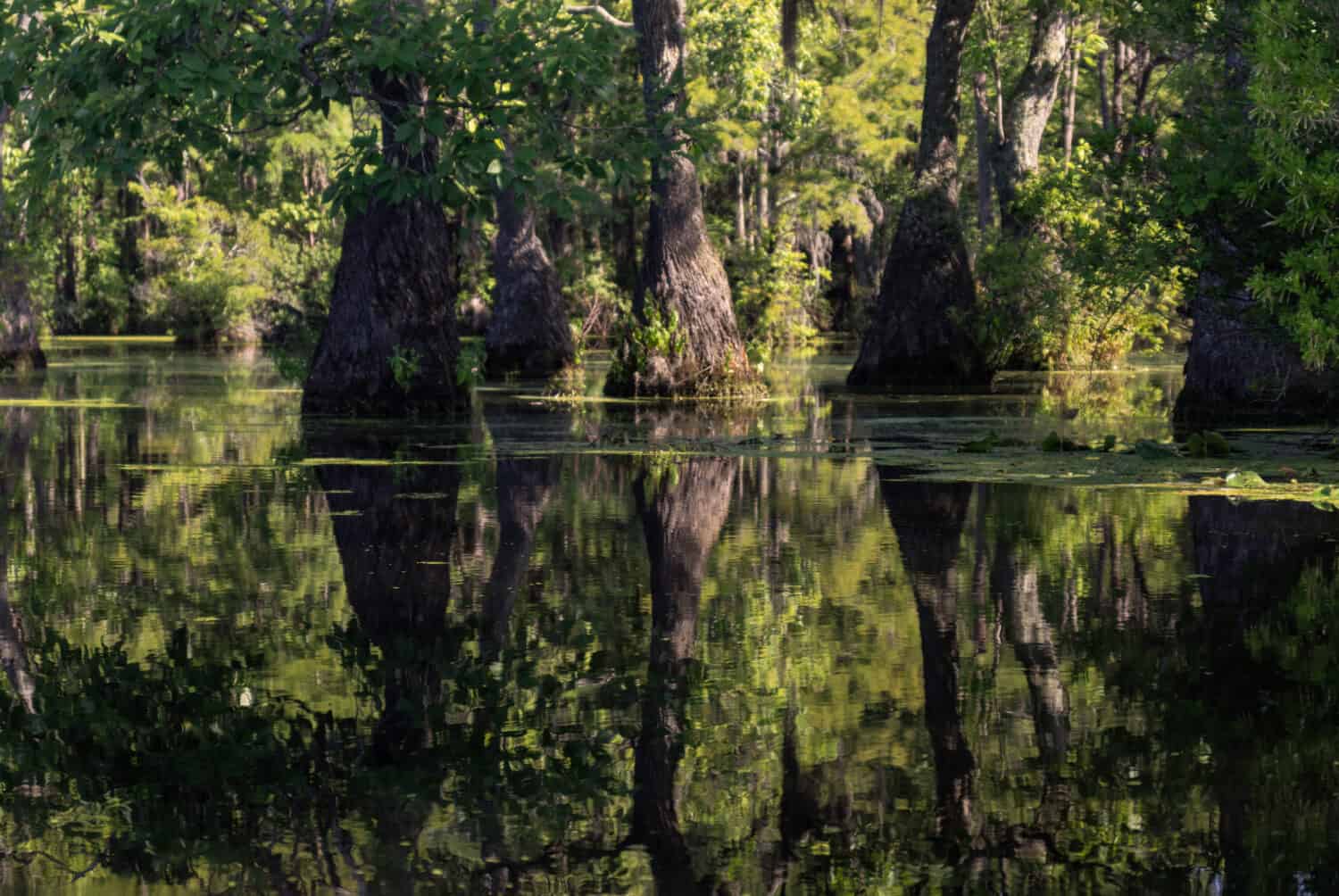
One of the world’s oldest bald cypresses is near North Carolina’s largest landfill.
©Nature’s Charm/Shutterstock.com
We shouldn’t forget the amazing varieties of trees, shrubs and flowers that grow near North Carolina’s largest landfill. As Sampson County is the county with the second largest number of pig farms, it’s also the home of the oldest bald cypress. This tree, which is found along the county’s Black River, has been around for at least 2,624 years. Not only this, but scientists believe that there are a good number of bald cypresses along the river that are over 1,000 years old. Scientists believe that bald cypresses are among the oldest kinds of trees on earth. Other trees include:
- Birches
- Chestnuts
- Beeches
- Oaks
- Hickories
- Pecans
- Walnuts
- Sycamore
- Sweetgums
- Willows
- Basswoods
- Cottonwoods
- Redbuds
- Honey locusts
- Pines
- Palmettos
- Spruce
- Firs
- Hemlocks
- Water tupelos
- Persimmons
- Hollies
- Ashes
- Rhododendrons
- Blackgums
- Sassafrases
- Magnolias
- Dogwoods, which are the state trees of North Carolina
- White and red cedars
Flora: Flowers and Other Plants
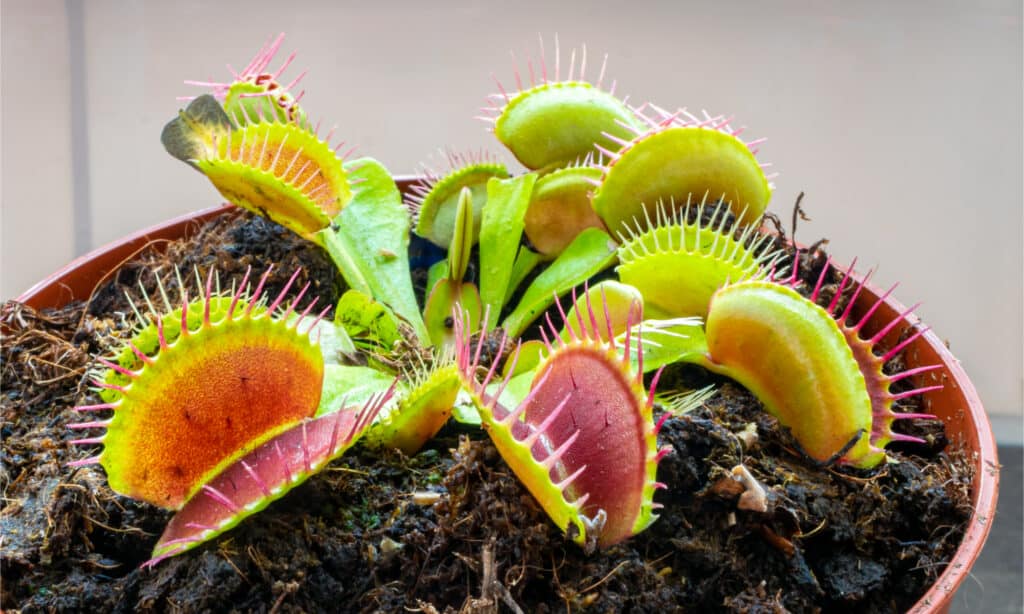
The carnivorous Venus flytrap is native to North Carolina’s coastal plain.
©Menno van der Haven/Shutterstock.com
The area is abundant in many varieties of flowers, but one that stands out is the Venus flytrap found on the North Carolina coast. This plant, Dionaea muscipula, is carnivorous. As a plant, it doesn’t hunt, but allows its prey to come to it. At the end of its leaves are traps with internal trigger hairs. When a spider or insect brushes against these hairs a few times, the trap snaps shut. The plant only begins to digest the prey after five more of the hairs are triggered. This makes sure that the object inside is worth eating and not a random object such as a falling leaf. Other plants you’ll find around North Carolina’s largest landfill include:
- Seashore mallows
- Carolina spring beauties
- American pokeweeds
- Poison ivies
- Pink ladies
- Virginia pepperweeds
- Blueberries
- Deerberries
- Primulas
- Silverbells
- Milkweed and butterflyweeds
- Yellow jessamines
- Bluets
- Jimsonweeds
- Morning glories
- Wild petunias
- Trumpet vines
- Common mulleins
- Daisies
- Dogfennels
- Goldenrods
- Cardinal flowers
- Indian pipes
- Indian tobacco
- Queen Anne’s lace
- Honeysuckles
The photo featured at the top of this post is © Sakura Image Inc/Shutterstock.com
Thank you for reading! Have some feedback for us? Contact the AZ Animals editorial team.






